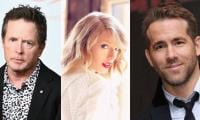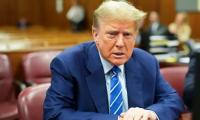The United States is home to nearly eight million Muslim Americans and Islam today ranks as the fastest growing faith group in the country. Outpacing it, however, is the proliferation of Islamophobia in the US - or fear and hatemongering of the faith and its followers.
Islamophobia has been at the front and in the centre of the 2016 presidential race. Most vividly and explicitly in the rhetoric of the Republican candidate Donald Trump, who proposed a ban on Muslims entering the US in December of 2015, and as recently as July 13, pushed for an expanded ban on Muslims “from areas of the world with a history of terrorism”.
One measure of Islamophobia is political rhetoric, and the other political track record. Whether he is a demagogue or not, Trump has never held a political office.
But his opponent, Hillary Clinton, has held a number of high-profile political offices, and has long ranked as a central figure in the Democratic Party.
After eight years as First Lady, Clinton served as a New York senator from 2001 to 2009, holding office during the September 11 terrorist attacks and the subsequent crackdown on Muslim American civil liberties.
From 2009 through 2013, Clinton assumed the role of secretary of state, overseeing the continuation of war in Iraq, which she voted for as senator, and pushing for aggressive engagement in Middle East conflicts, most notably in Libya and Syria.
In sum, Clinton’s hawkish foreign policy inclinations in the Muslim-majority nations, her unwavering alignment with Israel; and on the domestic front, support of the US PATRIOT Act and emergent counter-radicalisation policing, which links (Muslim) religiosity to presumed involvement with terrorism, looms heavy in the minds of Muslim American voters.
Progressive Muslim American blocs supported Bernie Sanders, often basing that support directly upon critiques of Clinton’s past and current platform.
After Sanders bowed out of the race, Muslim Americans find themselves interlocked between a candidate that frames much of his campaign on anti-Muslim animus and hysteria, and another whose political track record reveals a hardline approach to policing Muslims at home and punishing them abroad.
Rhetoric versus reality, tempered by the always-looming fear that Trump’s rhetoric may very well make for an even more ominous reality if he is elected come November.
This fear of Trump making good on his rhetoric is what’s driving many Muslim Americans to line behind Clinton.
While Muslim voters are exhausted with Clinton’s posture towards Muslims at home and abroad, and Sanders defects and independents are unwilling to resign to the “anything but Trump” plea, this sizable segment of Muslim-Americans finds itself permanently stuck between Hillary and a harder place.
In many regards, the 2016 presidential race manifests the flat understanding of Islamophobia today in the US.
Trump’s bellicose rhetoric against Muslims and his explicit segregation of Islam from his perception of American identity have branded him the “Islamophobic candidate” among and beyond Muslim-Americans.
Campaigning with manifestations of racism and blatant Islamophobia may be Islamophobia’s most apparent form. But it is hardly its only one.
Clinton’s rhetoric towards Muslims rings with tolerance. But it is frequently flanked with qualifiers such as “terror-hating”, “peace-loving” or the seemingly benign, yet divisive “moderate Muslim” tag.
The blatant Islamophobia embodied by Trump is, indeed, countered by a structural Islamophobia wielded by Clinton, making the 2016 presidential options more of a “lesser of two evils” ultimatum.
For Muslim-Americans, to vote for Trump is to do the unthinkable.
On the other hand, casting a vote for Clinton means assuming the risks and perils of an expanded “war on terror” at home and abroad.
And registering a third-party option or abstaining from voting would functionally push Muslim-Americans further down the political margins.
Nobody ever said voting, or not voting, was easy. Especially for a community already viewed as outsiders, wrestling with the unshakable narrative that being Muslim and American are clashing identities.
This article has been excerpted from: ‘Muslim voters between Hillary Clinton and a hard place’. Courtesy: Aljazeera.com
As usual, any such deal, aiming to resuscitate ailing economy, brings to fore urge and resolve to halt further...
A representational showing sticky notes on a board. — Unsplash/FileThere are some common themes from the lives...
Whether the Daanish Schools effort has been able to live up to its principles or not may be debatable
According to the federal government, last year 653,100 people experienced homelessness on a single night in America
Another advantage for Pakistan is the enhanced teledensity and internet penetration
Both media spheres need to dovetail in amplifying the urgency of addressing climate change at the local, national, and...







